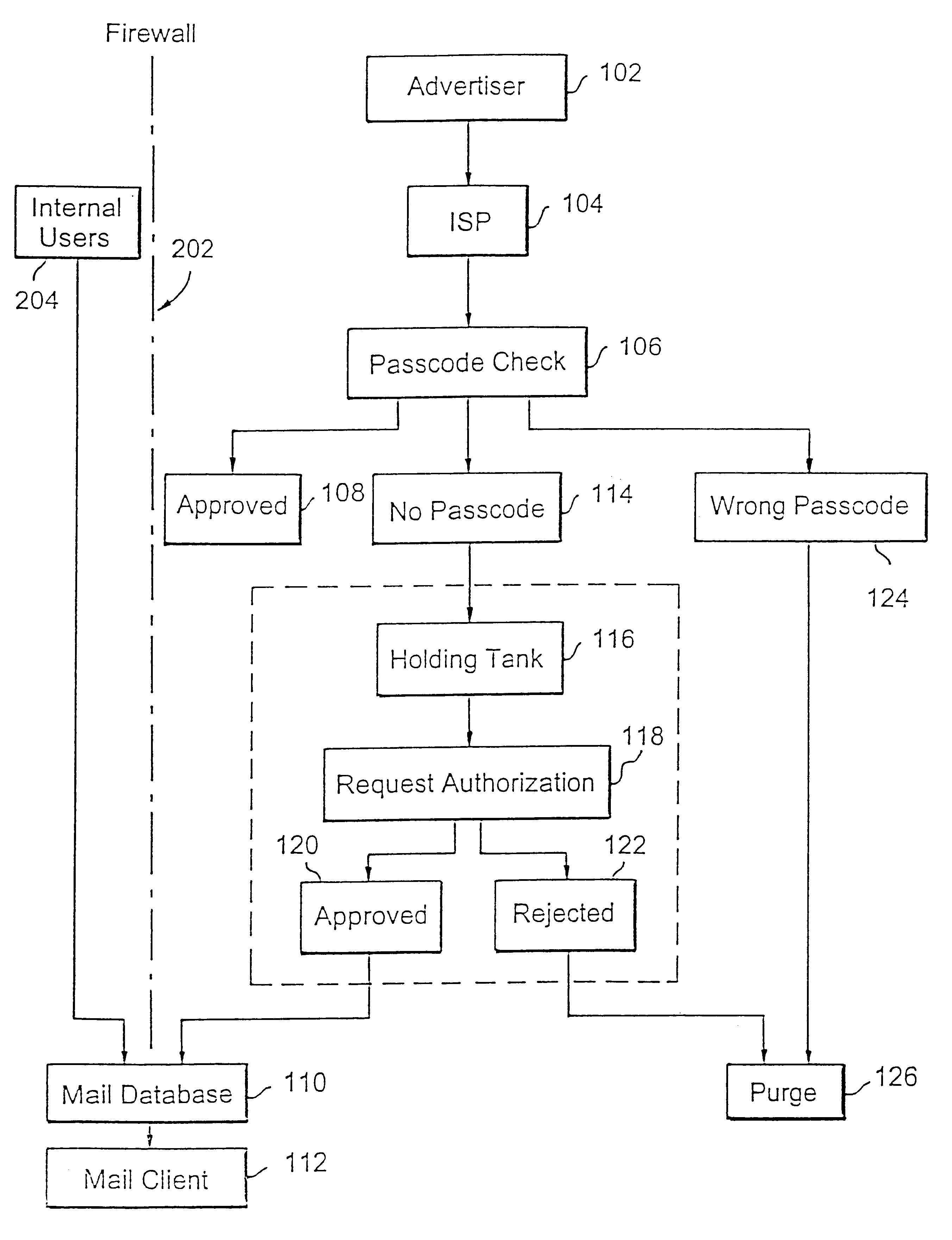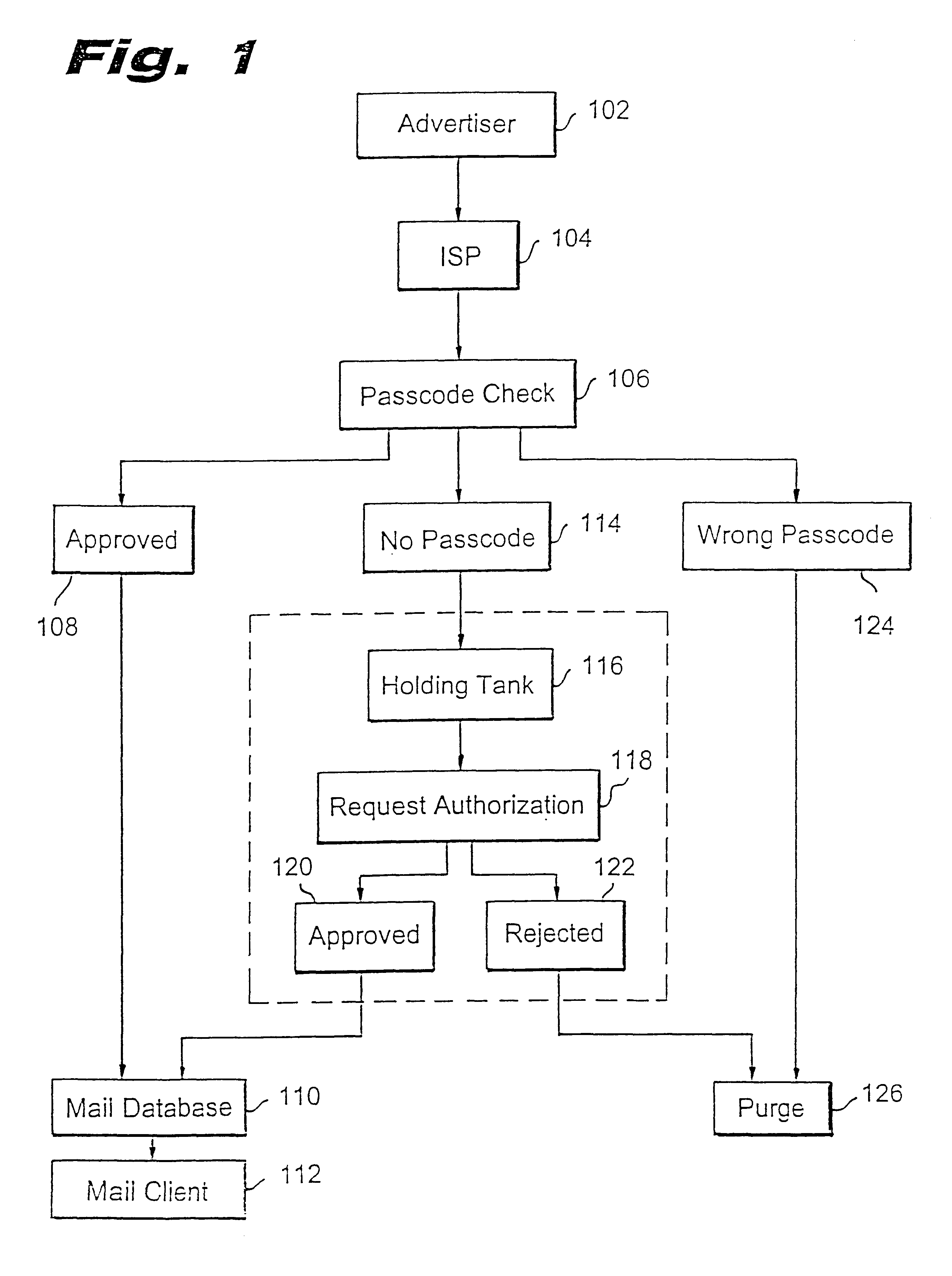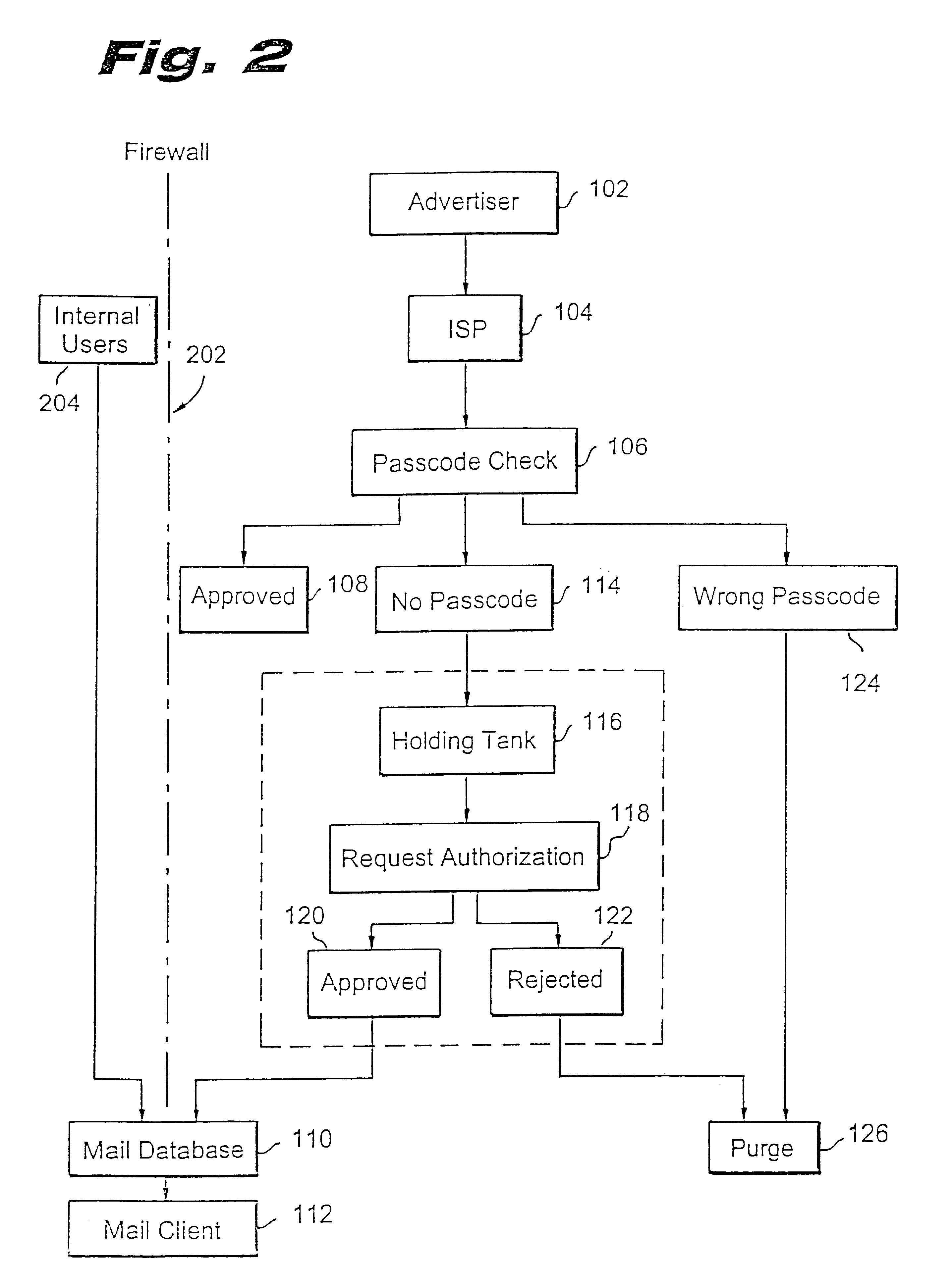Method for blocking all unwanted e-mail (SPAM) using a header-based password
a header-based password and email blocker technology, applied in the field of blocking all unwanted email, can solve the problems of wasting time by downloading voluminous but useless advertisement information, unsolicited electronic mail (e-mail), and limited storage capacity of thin client systems such as pda's, network computers,
- Summary
- Abstract
- Description
- Claims
- Application Information
AI Technical Summary
Benefits of technology
Problems solved by technology
Method used
Image
Examples
Embodiment Construction
Present invention is directed to a system and method for blocking unwanted e-mail, i.e., SPAM. The implementation generally requires enhancements to the known mail servers such as the Post Office Protocol version 3 (POP3) or Internet Mail Access Protocol, version 4 (IMAP4), and additional enhancements to the mail client code for the user. Any existing mail servers may easily adopt the method of the present invention for blocking unwanted e-mail.
FIG. 1 is a flow diagram illustrating a logical flow of the present invention. An advertiser at step 102 sends advertisement e-mails via an Internet service provider (ISP) at step 104. The ISP typically provides the e-mail services via its e-mail server. The e-mail server includes a functionality to check passcodes of all e-mails destined for a specific user configured for the SPAM blocking of the present invention. Accordingly, at step 106 the e-mail server checks the incoming e-mail's passcode against the user's passcode. If the passcode ma...
PUM
 Login to View More
Login to View More Abstract
Description
Claims
Application Information
 Login to View More
Login to View More - R&D
- Intellectual Property
- Life Sciences
- Materials
- Tech Scout
- Unparalleled Data Quality
- Higher Quality Content
- 60% Fewer Hallucinations
Browse by: Latest US Patents, China's latest patents, Technical Efficacy Thesaurus, Application Domain, Technology Topic, Popular Technical Reports.
© 2025 PatSnap. All rights reserved.Legal|Privacy policy|Modern Slavery Act Transparency Statement|Sitemap|About US| Contact US: help@patsnap.com



